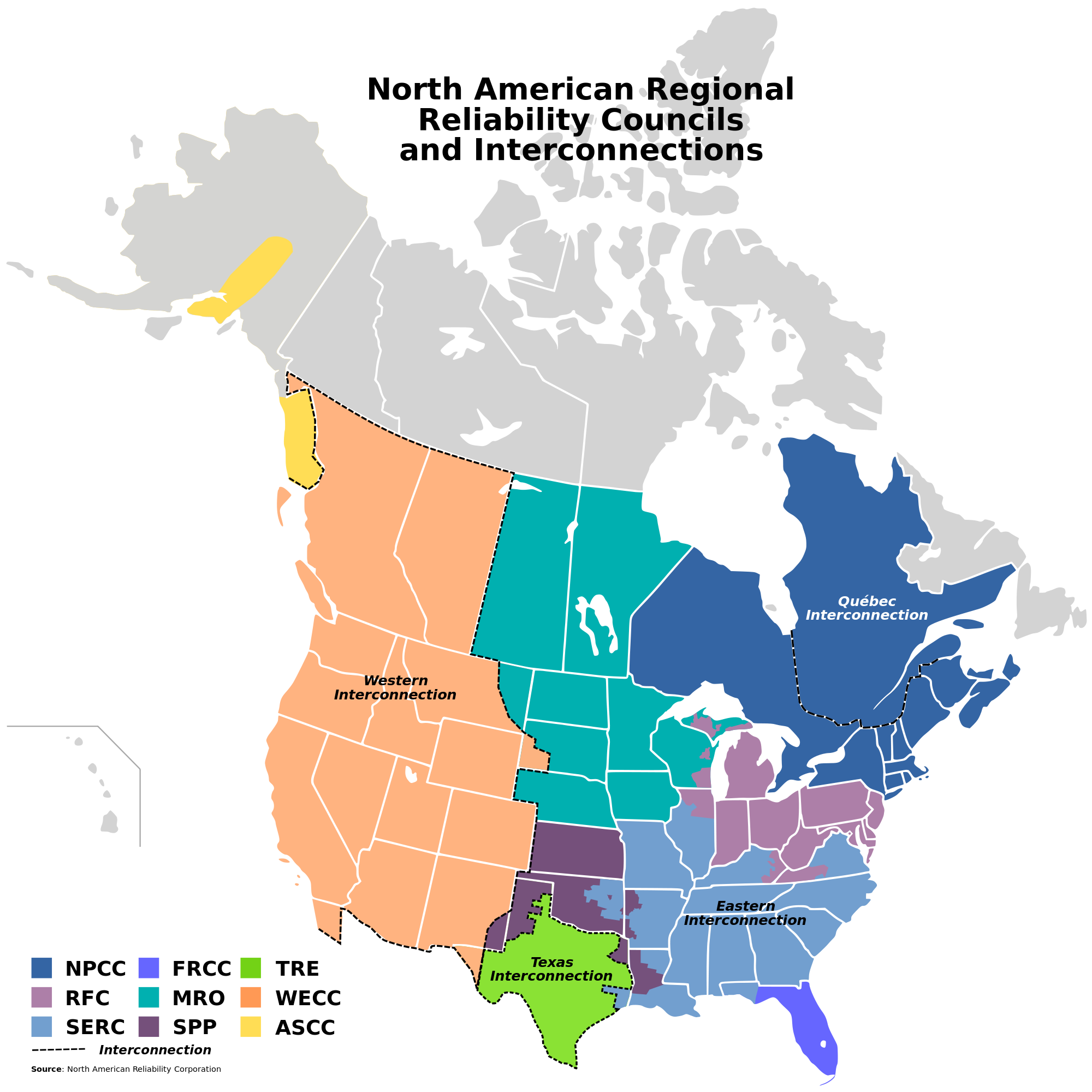Economic Performance
Elecrtical UtiliesThe interconnected North American electrical grid is the largest machine on earth.
Canada and the United States have similar regulatory structures. The Provinces and the States regulate all facets of generation, transmission and distribution as well as retail and wholesale pricing.
For over 100 years Canada and the United States have shared an integrated electrical grid.
The electricity generation mix varies widely by region, reflecting the types of energy available, economic considerations and policy choices.
In Canada, only three Provinces dominate electricity generation with hydro dams. In the U.S., 60% of all electricity produced is by fossil fuels (natural gas, oil and coal). Wind and solar generation is growing dramatically and with it the challenges of integration.
According to the Department of Energy, electrical demand is estimated to grow at over 1% per year for the next 25-years. Some grid infrastructure has been operating for over a century and the cost of upgrading to facilitate this growth will be onerous.
Many States see storage as an integral part of their Distributed Energy Resources (DER) infrastructure and the best strategy to stabilize the grid and save ratepayers money.

California, Oregon, Massachusetts and Hawaii are leading the way with energy storage procurement mandates. New York, Nevada, Washington and New Jersey along with nine other States have introduced bills related to mandating energy storage.
